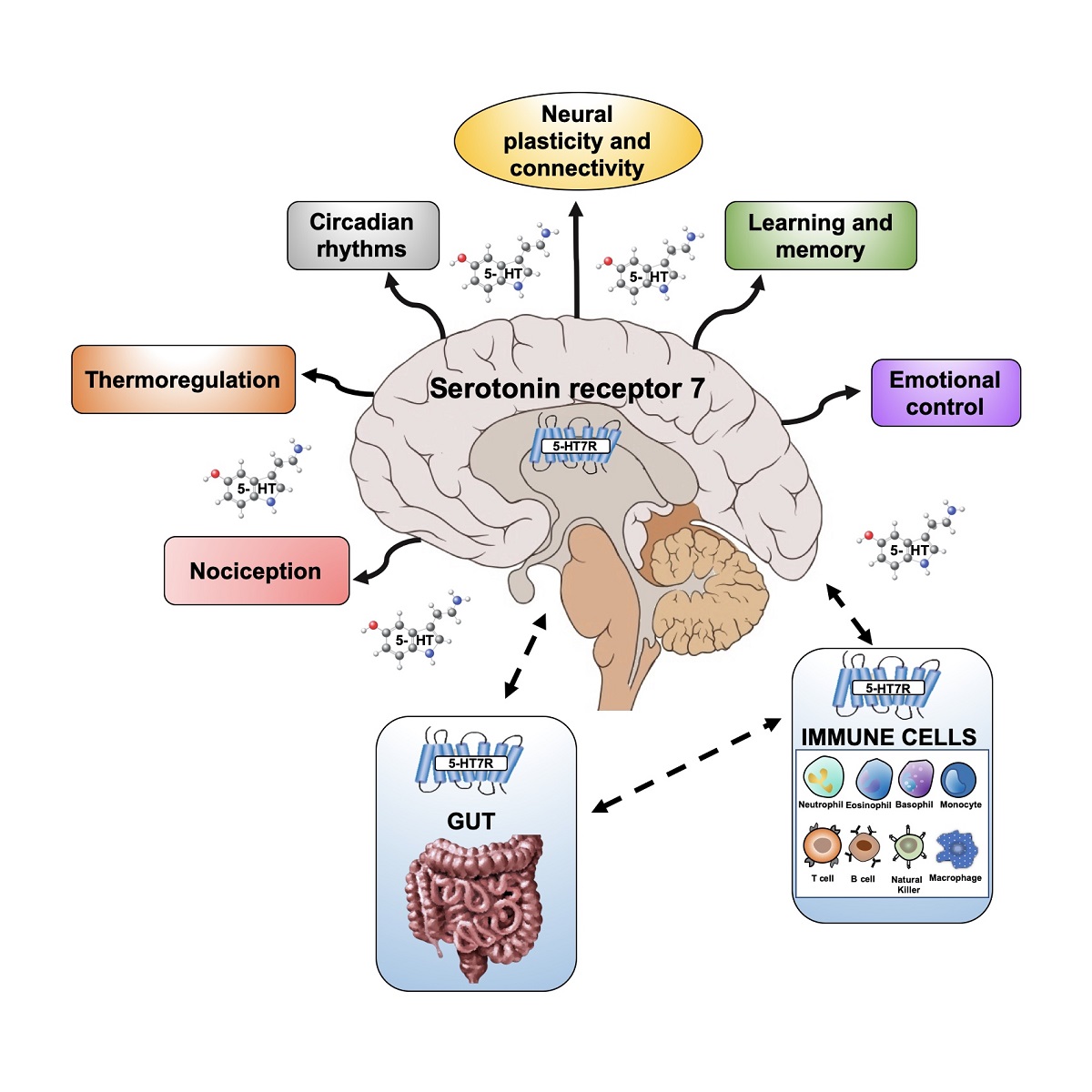Our knowledge on the plastic functions of the serotonin (5-HT) receptor subtype 7 (5-HT7R) in the brain physiology and pathology considerably advanced in the last few years. A wealth of data show that the 5-HT7R is a key player in the establishment and remodeling of neuronal cytoarchitecture during development and in the mature brain, and its dysfunction is linked to neuropsychiatric and neurodevelopmental diseases. The involvement of this receptor in synaptic plasticity is further demonstrated by data showing that its activation allows to rescue long term potentiation (LTP) and long term depression (LTD) deficits in various animal models of neurodevelopmental diseases. In addition, it is becoming clear that the 5-HT7R is involved in inflammatory intestinal diseases, possibly playing a role in the gut-brain axis, and modulates the function of immune cells. In this review, we will mainly focus on recent findings on this receptor’s role in the structural and synaptic plasticity of the mammalian brain, although we will also illustrate novel aspects highlighted in gut and immune system.

